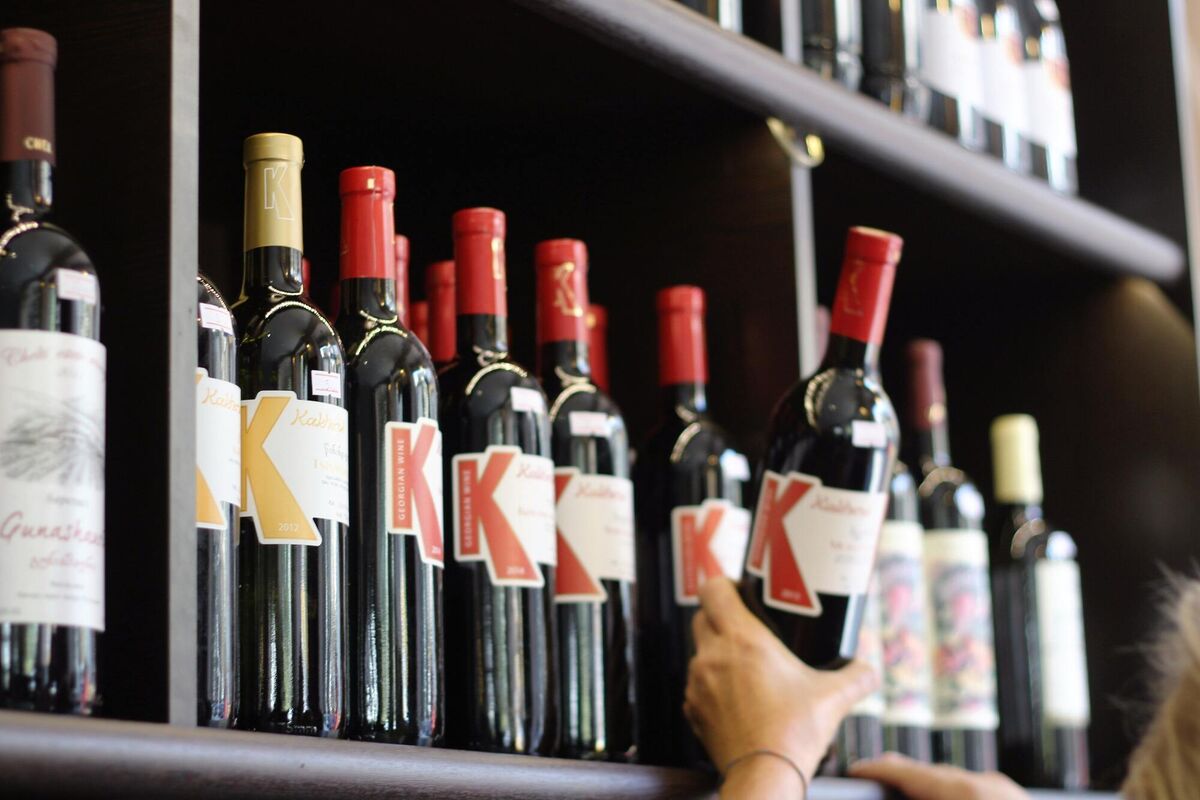Bottling up problems: More young women presenting with alcohol-related liver disease

Problem drinking among women is on the rise, according to a leading specialist.
More younger women are presenting with alcohol-related liver disease as a leading specialist warns that problem drinking among women is on the rise.
In the past 12 months, Dr Anthony O’Connor, a consultant gastroenterologist at Tallaght Hospital, said he has seen four women in their early 40s die of alcohol-related liver disease (ALD).
In the same period, just one young man died of the disease.
“I've been a doctor for 17 years now. When I first started, the patients you saw dying of liver failure were men in their 60s.
While alcoholic liver disease still kills more men than women, Dr O’Connor said it has been evening out during the past decade and, worryingly, it is younger women who are presenting with the disease.
“The amount of really young women we're seeing with this is very worrisome,” he said.
“The youngest patient on my books is a 26-year-old woman.”

While men usually present to him with ALD in their late 60s to early 60s, an increasing number of women are presenting to him with chronic liver disease in their late 30s or early 40s.
ALD is generally the result of decades of heavy drinking, he explained, but for women, the issue can arise earlier as women absorb and metabolise alcohol differently than men.
Women tend to have lower body weights, less body water and higher percentages of body fat than men, which mean they don’t process alcohol as efficiently as men.
As a result, women tend to have higher concentrations of alcohol in their blood when drinking equal amounts of alcohol to men.
ALD is a silent disease that creeps up on people, meaning many people experience no warning signs that alert them to the danger.
“Oftentimes, by the time you know you have it, it's too late,” Dr O’Connor said.
Many of his patients are referred to him after routine blood tests identify an issue. They have no noticeable symptoms.
“Your liver can get by on about 10% power. But the drop-off between 10% power or 8% or 9% could be the difference between somebody working in a very skilled or technical job to being unable to leave their chair,” he said, “and that's no exaggeration.”
Dr O’Connor said patients with liver diseases, even severe disease, can often appear fine, but then, something happens.
“It might be as simple as an infection or even constipation, some sort of biological challenge to the system that causes the metabolism to work a bit harder for a few days."
“Somebody with a very sick liver just doesn't have that reserve and they slip into liver failure."
“You'd be amazed at the number of people with chronic liver disease who tip into outright failure from something as simple as constipation or a mild chest infection."
"It's a knife's edge.”
Dr Sheila Gilheany, chief executive of Alcohol Action Ireland was not surprised more women, and younger women, are presenting with severe liver damage.
HSE guidelines recommend women drink less than 11 standard drinks spread out over the week, with at least two alcohol-free days. Binge-drinking is the consumption of four or more drinks within a two-hour period.
But a study published by medical journal in 2018 found Irish women were found to consume the seventh highest level of “average daily drinks” in Europe at just over three drinks per day.
While a separate study published by the same journal in 2019 revealed Irish adolescent girls ranked third in a global table of the worst binge drinkers. About two-thirds (61%) had reported binge drinking in the 12 months prior to the study.
Its unsurprising women are drinking more frequently and in greater amounts given they have been “aggressively” targeted by the alcohol industry in recent years, she said.
Cocktail culture, the ‘pinking’ of drinks and low-calorie options have all been targeted at women, who were seen as an area of growth, given the fact they traditionally consumed less than men.

“A lot of programmes, predominantly watched by women, are sponsored by drinks companies,” Dr Gilheany said, pointing to recent examples of and on RTÉ, which are sponsored by Casillero del Diablo and Santa Rita wines, respectively.
More insidiously, there is often a lot of product placement within the programmes, she said, with female characters being seen to consume wine often and regularly, sending out the message that this is a normal way to drink.
Then, she says, there’s the "wine o’clock" posts from social media influencers and your own friends.
“Those sort of messages are absolutely ubiquitous and everywhere, barely a day goes by without something like that popping up on your Facebook or Instagram and they're not there by accident.”
Dr Gilheaney said the normalisation of harmful drinking has meant people don’t recognise the danger in what they’re doing.
“The number of dependent drinkers in the country is actually relatively small, about 250,000, but the number of harmful drinkers is in the hundreds of thousands, maybe even over a million would be drinking harmfully.”
The Health Research Board’s National Alcohol Diary Survey in 2013 found close to 23% of female drinkers, who consumed alcohol in the week prior to the survey, drank more than the HSE’s recommended low-risk weekly drinking guidelines.

This measure was highest in the 18 to 24 year age group, with 39% of young women drinking more than the recommended weekly guidelines in the week prior to the survey.
“Women are drinking an awful lot more than they would have done in the past,” Dr Gilheaney said.
“I was home recently and looking at the back of the cupboard, my parents would have been given some wine glasses when they got married back in the 1950s and if you were to look at them you’d think god they’re so tiny – but actually, they hold 100ml of liquid, one standard drink.”
“You fill up the glass to what looks like an ordinary amount but our perceptions have really changed.”
“And again, it’s no coincidence that these things have happened because in buying a bigger glass, you pour more. It encourages you to drink more.”
Women are also unaware of some of the risks associated with alcohol, Dr Gilheany said, particularly around breast cancer.
About 12% of all breast cancers diagnosed in Ireland, or 300 cases per year, are associated with alcohol consumption.
“Something that is well known within medical communities but is not widely known in the general population is actually the impact of alcohol on breast cancer,” Dr Gilheany said.
“People know that smoking causes lung cancer," but there is a “lack of awareness” among women about the link between alcohol and breast cancer.
A Healthy Ireland survey in 2016 found that just 16% of women aged 15-24 know that alcohol can cause breast cancer.
“I remember the first time I heard that statistic. I was so shocked. And yet it has been known since the early 70s that alcohol is a class one carcinogen.”

According to the HSE, compared with a woman who does not drink, a woman who drinks one standard drink a day is associated with a 7% increase in the risk of developing breast cancer, while consuming three to six standard drinks per day increases the risk of breast cancer by 41%.
“The alcohol industry has worked extremely hard to keep that [information] under wraps,” Dr Gilheany said, comparing tactics used by the tobacco industry to those being used by the alcohol industry now.
“We’re seeing the exact same sorts of things from the alcohol industry, they’re using precisely the same techniques to obfuscate, to say it’s not clear cut when in fact it is clear cut. It’s not open to question, there’s plenty of research to prove it.”
Dr O’Connor said he believed messages around breast cancer and cervical cancer have gotten through to women, but when it comes to alcohol “it’s not cutting through".
“It's unusual because if you look at most other fields of medicine, women are generally a bit better for going to the doctor a bit earlier than men or before a problem gets too big.”
“For some reason, in alcohol we tend to see the inverse, that women are more reluctant to come.”
There also appears to be more of a stigma for women admitting to having an issue with alcohol, compared to men, he said.
“We don't seem to want to have a conversation about it,” he said, “but if you had a cancer that was killing women aged 40 and men aged 60 there would be an outcry.”
While Dr O’Connor said he has had patients admit to drinking more since the onset of the pandemic, he was quick to dispel suggestions it was a primary cause of concern.
“Am I'm particularly concerned on account of Covid? I think it's another lump of coal that's been thrown on the fire.”
The clinical director of an addiction charity has said he expects more people to present with alcohol issues in the wake of the Covid-19 pandemic.
Mick Devine said he was concerned alcohol problems are being “stored up” in lockdown, and there will be more people requiring such services when the pandemic lifts.
“It’s happening already,” he said.
Mr Devine said the Tabor Group, which provides residential addiction treatment services at its base in Belgooly, Co Cork, has seen increased demand for its services in 2021 and the pandemic is increasingly coming up as a reason help is being sought.

Some of the triggers caused by the pandemic have included the stress of working from home and homeschooling, Mr Devine said, and for those facing unemployment and uncertainty in their careers.
“Those in the music industry,” for example, “are looking at their calendar and seeing postponed, postponed, postponed."
“It’s bringing people to the edge and they are resorting to alcohol.”
Research carried out in recent months has suggested some of us are drinking more during the pandemic.
In May, a survey from Drinkaware found one in four Irish adults were drinking more since the introduction of Covid-19 restrictions, with 14% admitting to drinking four or more times every week.
The latest data from the CSO also shows just a marginal decline in net alcohol excise receipts for 2020, despite the fact pubs, bars and restaurants were closed for vast periods of the past year due to the pandemic.
And it was beer and cider were the alcoholic beverages that took the hit – wine consumption was actually up 12%

“The consumption of wine has increased in the home, particularly among women,” Mr Devine said.
"It has replaced the cup of tea.”
“And if you’re using alcohol as a reward, the amount can be excessive. And if you’re using it as a stress management, it’s easier for it to become excessive and for you to break your own rules.”
“Alcohol can become the companion in the absence of companions,” Mr Devine said, and in a pandemic where women are coming under increased stress with working from home and homeschooling, the balance between what is considered low-risk and harmful drinking can easily tip.










